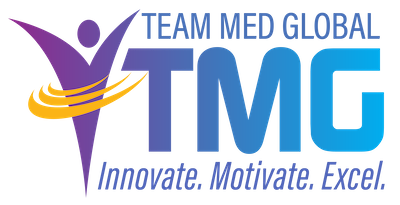 Physician retention isn’t just an HR challenge—it’s an organizational imperative that touches every aspect of healthcare operations. Provider Lifecycle Professionals (PLPs), who manage licensing, credentialing, provider enrollment, and quality, are key players in ensuring physicians feel supported, valued, and motivated to stay. While PLPs may not manage contracts or compensation, their work directly impacts the physician experience—and their ability to stay focused on patient care.
Physician retention isn’t just an HR challenge—it’s an organizational imperative that touches every aspect of healthcare operations. Provider Lifecycle Professionals (PLPs), who manage licensing, credentialing, provider enrollment, and quality, are key players in ensuring physicians feel supported, valued, and motivated to stay. While PLPs may not manage contracts or compensation, their work directly impacts the physician experience—and their ability to stay focused on patient care.
Start Strong: Prioritize Seamless Onboarding
Retention starts on day one. PLPs can ensure that new physicians are fully licensed, credentialed, and enrolled with payers before their start date. Delays in this process create frustration and signal disorganization. A smooth onboarding experience reassures physicians that their time is respected. When physicians can begin clinical work without red tape, they feel welcomed and confident in the organization’s ability to support them.
Tip: Create a standardized onboarding checklist and timeline for each physician. Communicate milestones clearly and provide regular updates to both physicians and stakeholders.
Maintain Momentum: Streamline Ongoing Processes
Routine recredentialing, reappointments, and payer revalidations can either build trust—or erode it. When handled proactively, these processes show that the organization has its act together and cares about keeping things easy for providers. Consistency in these areas reduces stress and prevents burnout, allowing physicians to focus fully on patient care.
Tip: Use automated reminders and tracking systems to initiate processes well in advance. Avoid last-minute document requests, and coordinate with physicians’ schedules to minimize disruptions.
Use Data to Drive Improvements
PLPs are stewards of valuable data. Credentialing timelines, payer enrollment turnaround, and provider satisfaction with administrative processes can all reveal patterns that impact retention. When data leads to visible improvements, physicians see that their concerns are taken seriously and that their feedback drives meaningful change.
Tip: Conduct quarterly audits of provider lifecycle workflows. Identify bottlenecks and develop targeted action plans. Share improvements with physicians—they notice when things get better.
Ensure Visibility and Accuracy
When physicians are correctly listed in directories and enrolled in networks, it affects their reputation, patient volume, and income. Errors in this area can lead to frustration and mistrust. Accurate information reinforces a physician’s credibility in the eyes of patients, peers, and the broader healthcare community.
Tip: Implement a verification process for all directory and enrollment changes. Confirm details directly with providers and give them an easy way to report discrepancies.
Advocate for Physicians
PLPs often collaborate across departments. Use that position to elevate provider feedback and advocate for system improvements that reduce administrative burden. Being a reliable advocate fosters trust and shows physicians that they have allies invested in their long-term success.
Tip: Establish a feedback loop with physicians—such as short surveys or informal check-ins—to gather insights. Use this data in discussions with leadership to drive change.
Building a Retention Culture
Physician retention is about more than salary or benefits—it’s about creating an environment where physicians feel supported, respected, and able to thrive. PLPs foster that environment through reliable systems, proactive communication, and seamless processes that reduce administrative burdens and promote engagement.
Every touchpoint with a physician is an opportunity to reinforce their decision to stay—and PLPs are central to making those moments count. By championing efficiency and advocating for provider needs, PLPs help build a culture where physicians choose not just to work—but to stay and grow.
